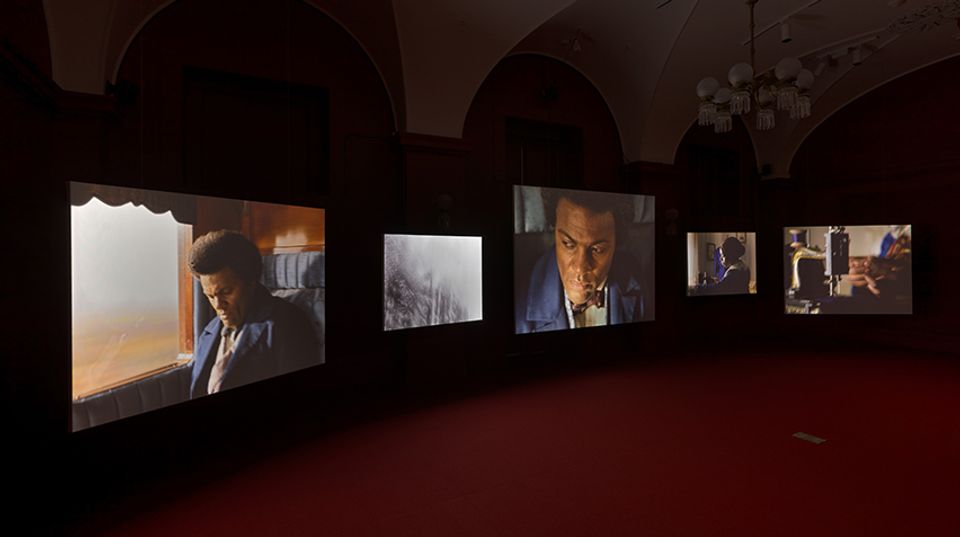
In This Case is a series of weekly posts on art in the Luce Foundation Center, a visible art storage facility at the Smithsonian American Art Museum that displays more than 3,300 pieces in fifty-seven cases.
George Catlin (about whom Eye Level has written before) composed naturalist paintings on the trail that necessarily required a quick touch. In his portraits of Great Plains Native Americans, he is lavish in detail, but frequently details from the settings are more quickly sketched. However, when Catlin confronted the sublime in nature, his brush grew more expressive. The sublime sometimes took the form of vast prairie fires, which Catlin portrayed using a roiling brushstroke that approached the abstract.
Prairie Meadows Burning is my favorite among his paintings. Catlin's composition couples two dramatic gestures that mirror one another—one of smoke into the sky and the other of fleeing horsemen. The smoke billows from the vertical center of the left edge toward the upper right; the horses and their riders spill from the center toward the lower right of the canvas. Catlin pairs the natural phenomena with human drama. He also includes a few internal rhymes in the painting, like the alternating flecks of white and red that distinguish horse, rider, and gear.
You'll find this Catlin painting here in the Luce Center.


















